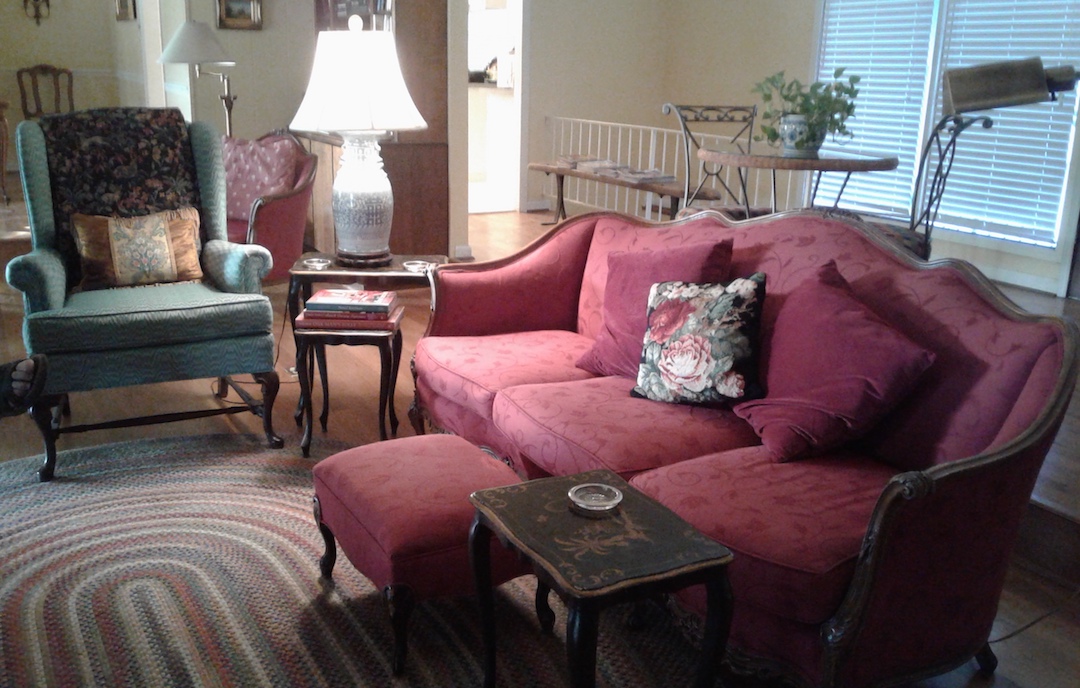“Some things just make my heart happy!”
That was what I said to my husband while painting our master bathroom recently. The beauty and promise of a fresh coat of paint going smoothly on the wall…oh yes!
You can bring new life to a room with that one step. You can give a completely new look to furniture or an accessory with the same step. If you are looking to refresh your space — without remodeling — I highly recommend thinking about paint. As you do, here are a few comments and suggestions.
It can be done. You don’t need many tools, and you can get a nice look with focus and care. You will need to take time for painting, though, so don’t try to fit it in between chores or with young children in your care.
- You need a paint tray (& cheap liner to make cleanup easy), a roller with cover (one-time use for covers will save your sanity and time), and an 2″ or 2-1/2″ angled brush. I find the short-handled brushes to be much easier to hold, and I clean them thoroughly right away for several uses.
- A paint key opens cans easily, but a screwdriver also works.
- A stir stick is nice, but you won’t need it if you buy your paint right before you use it.
- Chip or sponge brushes are handy for touch-up after the entire room has dried (since you have everything else cleaned up). They are cheap, so you can use and toss them.
- Use the angled brush to paint the edges of the room. Go slowly and carefully, and you can get a smooth line right up to the edge. Take your time — it’s worth it! You can also tape to make sure you stay within the lines, but tape does not mean that you can be sloppy. Globs will still show when the tape is pulled off.
- Rolling is the easiest and quickest step. If you haven’t before, check out online videos for how to do it well. It’s really fairly easy, once you get the feel.
Use quality paint. Buy the best paint you can afford. Using cheap paint will mean more coats, so you end up spending as much or more. Better paint will cover the wall smoothly. I rarely have to do two coats, although reds or lights-over-darks always take more work.
Spray paint is cheaper than a new ceiling fan. A friend recently moved into a new home and was decorating without spending a lot of money. She knew the look she wanted, but then she compared the price of a new ceiling fan with the price of spray paint. Pictures of her process are below, and she is quite pleased!
Consider the size of the room. Dark paints will make a small space feel smaller. Light colors will open up a tiny room. Consider your color and how it will act before you buy and paint. Samples are a great idea to get a better idea of how paint looks in your space and lighting.
You don’t have to change everything. You can change the color on the wall, even slightly, and not change anything else in the room. You’ll be surprised at how much fresher the room feels to you when you are done! Sometimes a different color choice will change the feel of a furniture item also. It’s a cheaper way than completely redoing the room, if new furniture and decor is not in your budget.








 Link styles with color to coordinate for a cohesive look. Repeating one or more color combinations in the rooms creates the look of greater space. A range of furniture styles, sizes and shapes can have a coordinated look with repeated or corresponding colors. You create unity in your existing collection of furniture by grouping pieces by wood tones or by upholstery color.
Link styles with color to coordinate for a cohesive look. Repeating one or more color combinations in the rooms creates the look of greater space. A range of furniture styles, sizes and shapes can have a coordinated look with repeated or corresponding colors. You create unity in your existing collection of furniture by grouping pieces by wood tones or by upholstery color. Experiment with color. Your base colors for a house don’t have to be neutrals. You can use cranberry rather than tan on your wall, as long as you have a cohesive color palette throughout. Consider how colors make you feel when choosing your palette, as well as which colors make you look good. Your home is your daily background.
Experiment with color. Your base colors for a house don’t have to be neutrals. You can use cranberry rather than tan on your wall, as long as you have a cohesive color palette throughout. Consider how colors make you feel when choosing your palette, as well as which colors make you look good. Your home is your daily background.